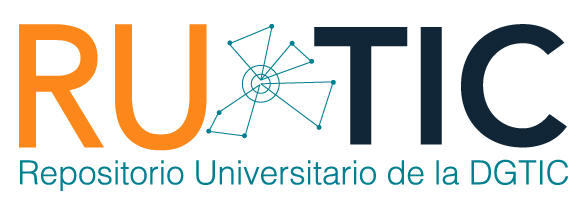| dc.coverage.spatial | MX | |
| dc.date.accessioned | 2018-06-28T05:04:44Z | |
| dc.date.available | 2018-06-28T05:04:44Z | |
| dc.date.issued | 2014-12-01 | |
| dc.identifier.uri | https://ru.tic.unam.mx/handle/123456789/2274 | |
| dc.description | Tema del mes | |
| dc.description.abstract | Las enzimas son proteínas, polímeros formados por aminoácidos covalentemente unidos entre sí, que catalizan en los organismos una gran variedad de reacciones químicas. La actividad catalítica de las enzimas depende de que mantengan su plegamiento, es decir, su estructura tridimensional. En esta estructura tridimensional se forman cavidades, llamadas “sitio activo”, las cuales muestran afinidad por las moléculas específicas (sustratos) que se convertirán en productos. La combinación de grupos funcionales químicos presentes en estas cavidades genera un conjunto de interacciones covalentes y no covalentes entre la proteína y el sustrato, que hacen que la conversión de éste en un producto se vea favorecida. Como cualquier catalizador, al finalizar la transformación del sustrato y liberarse el producto del sitio activo, la enzima regresa a su estado original y puede involucrarse en un nuevo ciclo de catálisis. Las enzimas pueden utilizarse también fuera de las células: desde hace milenios el ser humano las ha aprovechado. Sus aplicaciones más antiguas tienen que ver con la alimentación, por ejemplo, la producción de pan y queso. En este artículo explicaremos qué tan eficientes son las enzimas como catalizadores y cómo es que funcionan. También hablaremos sobre la historia de su descubrimiento y los avances científicos que permitieron el desarrollo de la biocatálisis como una de las biotecnologías más relevantes en la época moderna. | es_MX |
| dc.description.abstract | Enzymes are proteins, polymers composed by chemically bonded aminoacid molecules, which catalyze a wide range of chemicals reactions inside organisms. The catalytic activity of enzymes depends on their three-dimensional (3D) structure. Inside this 3D structures there are cavities, called “active site”, that shows affinity for specific molecules (called substrates) that will eventually become products. The combination of chemical functional groups in the active site creates covalent and non-covalent interactions between the protein and the substrate molecules; these interactions favor the conversion of substrates into products. As any catalyst, after the substrate transformation and once the product has been released from the active site, the enzyme returns to a basal or ground state and is ready to engage in a new catalytic cycle. Enzymes function outside cells, and historically men have used enzymes for their benefit. The most ancient enzyme applications are related to food, such as the production of bread and cheese. In this article we explain how efficient enzymes are and how do they work. We also present a brief account on the history of their discovery and the scientific breakthroughs that allowed the development of biocatalysis as one of the most significant biotechnologies in the modern era. | en |
| dc.format | html | |
| dc.format | application/pdf | |
| dc.format.extent | 3.9 MB | |
| dc.format.extent | 1.16 MB | |
| dc.language | spa | |
| dc.publisher | Universidad Nacional Autónoma de México. Dirección General de Cómputo y de Tecnologías de Información y Comunicación. Revista Digital Universitaria | |
| dc.relation.isformatof | http://www.revista.unam.mx/vol.15/num12/art91/art91.pdf | |
| dc.relation.ispartof | http://www.revista.unam.mx/index_dic14.html | |
| dc.rights | openAccess | |
| dc.source | Revista Digital Universitaria (1607 - 6079). Vol. 15, No. 12 (2014) | |
| dc.subject | Enzimas | |
| dc.title | Enzimas: ¿qué son y cómo funcionan? | es_MX |
| dc.title.alternative | Enzymes: what are they and how do they work? | en |
| dc.type | article | en |
| dc.subject.keywords | Enzima , Catalozador, Biotecnología, Biocatálisis, Proteínas, Enzyme, Catalyst, Biotechnology, Biocatalysis, Proteins | |
| dc.identifier.url | http://www.revista.unam.mx/vol.15/num12/art91/ | |
| dc.creator | JOAQUIN RAMIREZ RAMIREZ | |
| dc.creator | MARCELA AYALA ACEVES | |
| dc.rights.url | http://creativecommons.org/licenses/by-nc-sa/4.0 |
Files in this item
This item appears in the following Collection(s)
COMPARTE
BÚSQUEDA
Escriba el texto a buscar en DSpace
CONTACTO
El Repositorio Universitario de la DGTIC se edita en la Dirección General de Cómputo y
de Tecnologías de Información y Comunicación (DGTIC), de la Universidad Nacional Autónoma de México (UNAM)
Circuito Exterior s/n, Ciudad Universitaria, Coyoacán, C.P. 04510, México, D.F
Tel: +(52) (55) 56228166 Email: rutic@unam.mx









 ¿Qué es un repositorio...?
¿Qué es un repositorio...? ¿Qué beneficios obtengo...?
¿Qué beneficios obtengo...? ¿Qué tipo de recursos...?
¿Qué tipo de recursos...? Preguntas frecuentes
Preguntas frecuentes